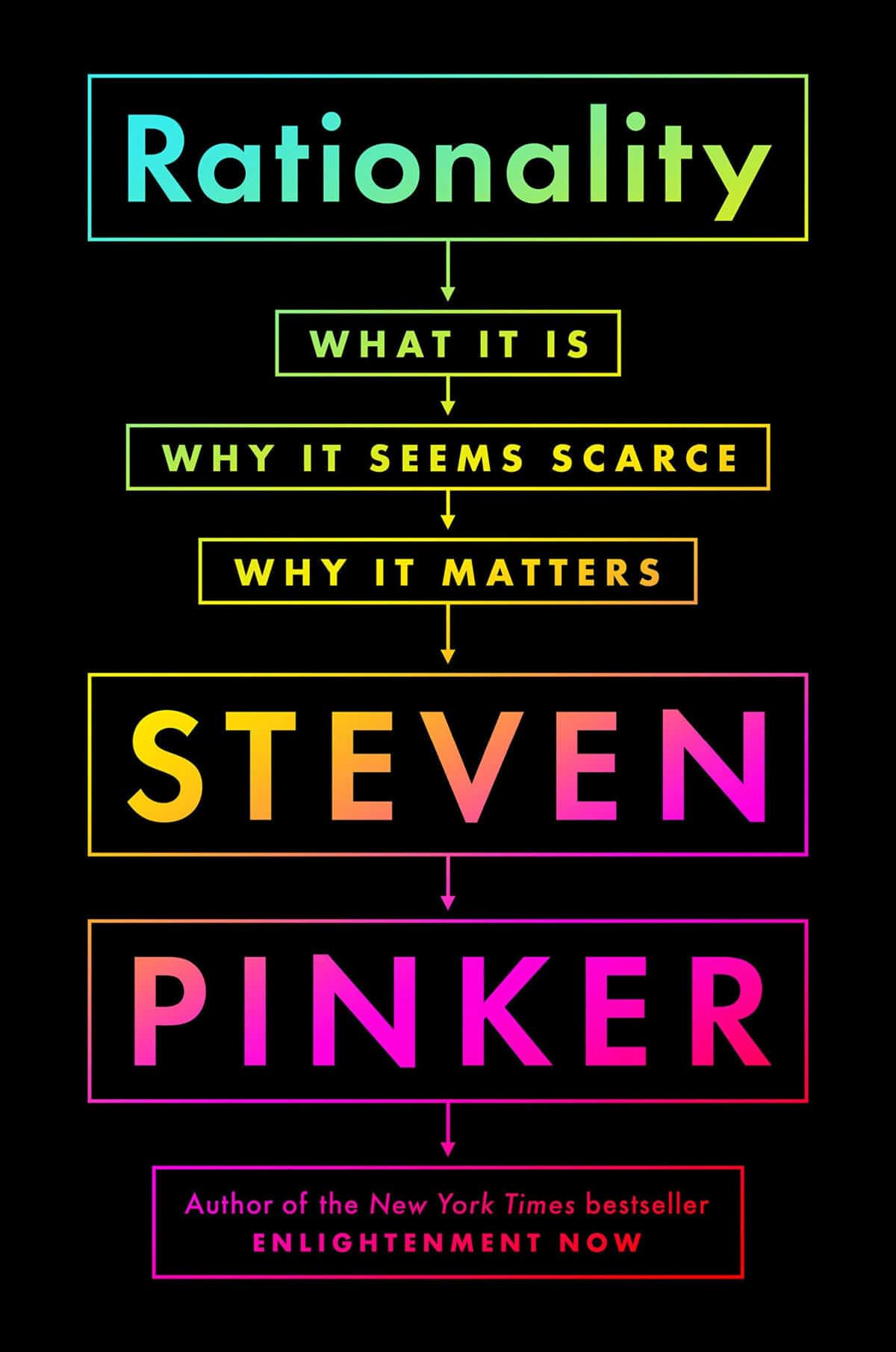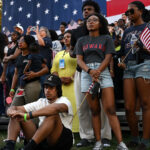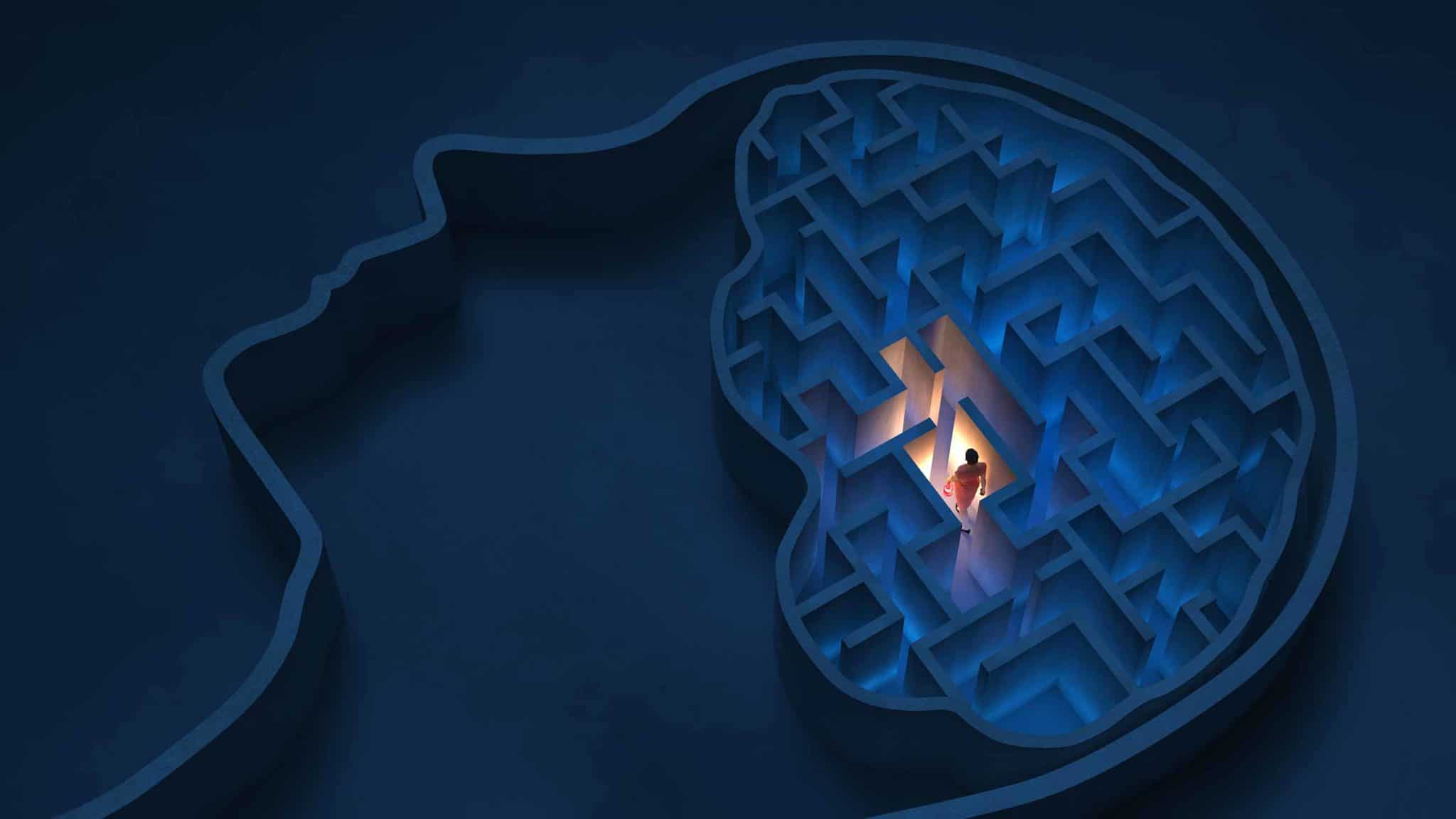In December 2016, a North Carolina man armed with a rifle entered a pizza restaurant in Washington, D.C., in order to halt what he believed was a child sex-trafficking network run by Hillary Clinton and prominent Democrats. There is, of course, no such network, and scholars have expended a great deal of energy trying to explain why some people (some of whom moved on to become supporters on QAnon) believed there was. As Steven Pinker puts it in his latest book, “Rationality: What It Is, Why It Seems Scarce, Why It Matters,” we’re left wondering “why humanity appears to be losing its mind.”

BOOK REVIEW — “Rationality: What It Is, Why It Seems Scarce, Why It Matters,” by Steven Pinker (Viking, 432 pages).
It’s not just conspiracy theorists who hold non-evidence-based beliefs. Pinker points out that 55 percent of Americans believe in psychic healing, and 41 percent believe in extrasensory perception, according to a 2005 Gallup survey. In fact, 37 percent of us believe in haunted houses while only 32 percent believe in ghosts — which means, as Pinker notes, “that some people believe in houses haunted by ghosts without believing in ghosts.”
Pinker, the Harvard cognitive psychologist and linguist known for a string of popular science books, believes the world would be a better place if we could learn to be more rational. Toward the end of his new book, he suggests rationality should be taught in schools as the “fourth R,” alongside reading, writing, and arithmetic. In fact, the book’s early chapters can be read as a kind of rationality primer, focusing on deductive and inductive logic, rational choice theory, and various branches of statistics.
Many of us, including scientists and other STEM professionals, are apparently in need of such a primer. Consider this problem, which many people bungle: Suppose that 1 percent of women have breast cancer. Now suppose that a test for breast cancer has a sensitivity of 90 percent (meaning that for a patient who really does have cancer, the test gives a positive result 90 percent of the time.) Now suppose a woman tests positive. What is the probability that she in fact has the disease? Pinker notes that most people — in fact, most doctors — guess somewhere between 80 and 90 percent. The right answer — you need to use something called “Bayes’s rule” to work it out — is 9 percent. As Pinker puts it, “the professionals whom we entrust with our lives flub the basic task of interpreting a medical test, and not by a little bit,” overestimating the chances that the woman has cancer by almost a factor of 10.
If “Rationality” was just a guide to probability, statistics, and general numeracy, we wouldn’t need Pinker to write it; there are plenty of good books along these lines out there already — Jeff Rosenthal’s “Struck by Lightning” comes to mind, as does Kit Yates’s “The Math of Life and Death” (reviewed by Undark last year). Similarly, the wish for a more rational world was the driving force behind Carl Sagan and Ann Druyan’s “The Demon-Haunted World” and Michael Shermer’s “Why People Believe Weird Things.” But even if some of the subject matter is familiar, Pinker’s breezy-yet-authoritative style sets his books apart. (There’s also a good dose of humor in the book, including a number of old Jewish jokes, some of them quite funny.)
But Pinker’s concerns go beyond mere math. The way we talk about numbers is crucial, too. Often, we pay too much attention to one sort of statistic and too little to another. That’s why, following a headline-grabbing plane crash, many people choose to drive rather than fly — resulting in more deaths, because cars are far more deadly than airliners in terms of passenger-miles.
In a similar vein, Pinker asserts that nuclear power is “the safest form of energy humanity has ever used,” and yet the public perceives of nuclear power as being extremely dangerous. The opposition, Pinker writes, is driven largely “by memories of three accidents: Three Mile Island in 1979, which killed no one; Fukushima in 2011, which killed one worker years later (the other deaths were caused by the tsunami and from a panicked evacuation); and the Soviet-bungled Chernobyl in 1986, which killed 31 in the accident and perhaps several thousand from cancer, around the same number killed by coal emissions every day” (Pinker’s italics).
And then there’s terrorism, which, in a typical year, kills fewer people in the U.S. than either bee stings or lightning — but the particularly horrific 9/11 attacks, which killed some 3,000 people, cemented themselves in the nation’s memory, leading “to the creation of a new federal department, massive surveillance of citizens and hardening of public facilities, and two wars which killed more than twice as many Americans as the number who died in 2001, together with hundreds of thousands of Iraqis and Afghans.”
Such reactions — or irrational overreactions, as Pinker might argue — are a favored target for the author. For example, he notes that school shootings kill a minuscule number of Americans compared to the overall number of homicides — and yet the nation’s schools “have implemented billions of dollars of dubious safety measures, like installing bulletproof whiteboards and arming teachers with pepperball guns, while traumatizing children with terrifying active-shooter drills.”
Maybe so. But Pinker’s insistence that we examine the data — a worthy enterprise in policymaking — doesn’t always compel him to provide all of the relevant data when he mounts a critique of his own. On the 2020 killing of George Floyd, an unarmed Black man, by a White Minneapolis police officer, Pinker says that Floyd’s murder “led to massive protests and the sudden adoption of a radical academic doctrine, Critical Race Theory, by universities, newspapers, and corporations.” While the protests that swept the nation are inarguable, what of the adoption of Critical Race Theory? Such broad claims would seem to require careful attribution, but on this front Pinker falls short: The book has plenty of end-notes, including citations for the numbers associated with police shootings, for example — but nothing that helps the reader understand which newspapers or corporations have adopted Critical Race Theory, or how they might have done so.
Pinker also argues that, as with terrorism and school shootings, the response to Floyd’s death was an overreaction, “driven by the impression that African Americans are at serious risk of being killed by the police.” He continues: “A total of 65 unarmed Americans of all races are killed by the police in an average year, of which 23 are African American, which is around three tenths of 1 percent of the 7,500 African American homicide victims.”
Here, Pinker’s penchant for numbers is likely to be used against him: The reader might object that the relevant figure is not the percentage of homicides among Black Americans in which the perpetrator was a police officer, but rather, of Americans killed by police, the percentage that are Black — and here we can do the math ourselves: 23 divided by 65 is about 35 percent, even though Black people make up only about 14 percent of the nation’s population. (Pinker does discuss this alternative way of framing the issue, but not until about 20 pages later.)
Pinker’s harshest words are reserved for his fellow academics and the institutions that employ them. Universities, he argues, ought to be bastions of rationality – instead, he says, they’ve “turned themselves into laughingstocks for their assaults on common sense” while nurturing a “suffocating left-wing monoculture, with its punishment of students and professors who question dogmas on gender, race, culture, genetics, colonialism, and sexual identity and orientation.” Pinker’s concern is that people won’t take academics seriously when they warn about the dangers of, say, climate change, if they spend the rest of their time (in his view) spouting woke dogma.
How a reader responds to assertions of this sort may very well depend on their politics. When Pinker sticks to the science, he’s on much firmer ground — though, inevitably, his arguments involve a degree of speculation. For example: If rationality is so great — if it can save lives — why do we so often behave irrationally? He frames the answer in evolutionary terms. Yes, we often spin poorly reasoned arguments, but doing so has primed us to notice when someone else is pulling a fast one on us. As Pinker puts it: “We evolved not as intuitive scientists but as intuitive lawyers. While people often try to get away with lame arguments for their own positions, they are quick to spot fallacies in other people’s arguments.”
The end result is that a group of people can reason far better than any one individual within the group — and this, Pinker argues, increases the group’s chances of survival. Pinker takes a similar approach to the question of why we believe far-out conspiracy theories. “Whether they are literally ‘true’ or ‘false’ is the wrong question,” Pinker writes. “The function of these beliefs is to construct a social reality that binds the tribe or sect and gives it a moral purpose.”
Some of Pinker’s arguments are more convincing than others, and many readers will probably find something to disagree with as they make their way through “Rationality.” But few, I think, would object to his overarching goal of creating a more rational world — even if achieving it, as Pinker readily admits, is likely to involve a great deal of hard work.
UPDATE: A previous version of this piece incorrectly defined sensitivity. If a breast cancer test has a sensitivity of 90 percent, for a patient who really does have breast cancer, it will return a positive result 90 percent of the time. The piece also incorrectly referred to the restaurant associated with “Pizzagate” as being in a Washington, D.C. suburb. It’s in Washington, D.C. itself.











Comments are automatically closed one year after article publication. Archived comments are below.
If the correction to the definition of sensitivity is intended to address Allison’s comment above, it fails. The calculation that yields 9% probability of cancer implicitly assumes that the false positive probability is 1 minus the true positive probability. That assumption is not necessarily correct and is likely to be incorrect.
Your Baysian equation example can’t be solved without knowing the specificity of the test.
“a North Carolina man armed with a rifle entered a pizza restaurant in the suburbs of Washington, D.C.,”
A small quibble: Comet Ping Pong is not in a suburb, but is in D.C. itself.